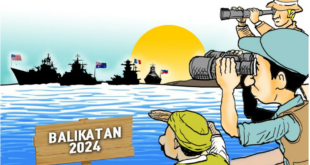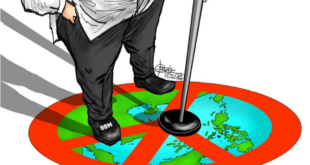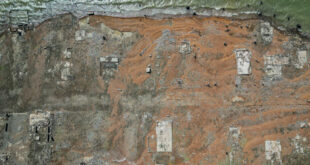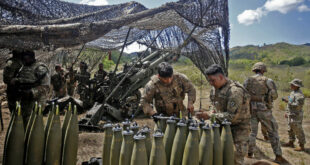West focusing on opening sea route to Gaza’s coast in effort to alleviate hunger crisis.

The latest:
- Ottawa to restore funding to UN agency for Palestinian refugees.
- 5 killed by malfunctioning airdrops hitting homes and people, Gaza officials say.
- Israel admits its troops opened fire at people during deadly aid convoy chaos.
A United Nations expert on Friday criticized U.S. efforts to boost humanitarian aid to Gaza, such as plans for a temporary port and recent airdrops, which he said were “absurd” and “cynical” methods as long as military aid to Israel continues.
Amid warnings of looming famine five months into Israel’s campaign against the Palestinian militant group Hamas in Gaza, the U.S. military has carried out airdrops of meals into Gaza and plans a temporary port for aid imports on its Mediterranean coast.
Aid groups say Israel’s near-total blockade of Gaza and the fighting have made it nearly impossible to deliver aid in most of the territory. Many of the estimated 300,000 people still living in northern Gaza have been reduced to eating animal fodder to survive.
Airdrops in particular “will do very little to alleviate hunger malnutrition and do nothing to slow down famine,” Michael Fakhri, UN special rapporteur on the right to food, told reporters in Geneva.

He warned of chaos as starving people joust for supplies. As for the port, he said no one had asked for it. He called the port and airdrops methods of “last resort.”
“The time when countries use airdrops and these maritime piers is usually, if not always, in situations when you want to deliver humanitarian aid into enemy territory,” Fakhri said.
The U.S. diplomatic mission in Geneva was not immediately available to respond to the remarks made late on Friday.
Fakhri, a Lebanese Canadian law professor mandated by the UN Human Rights Council to document and advise on global food security, said such methods made little sense while Washington continues to provide military support to Israel.

U.S. legislation envisages an additional $17.6 billion US in new military assistance to Israel as its war against Hamas continues in response to the group’s deadly Oct. 7 attacks on southern Israel.
“That’s more than allyship. That’s a marriage…. It’s almost incomprehensible,” Fakhri said of U.S. support to Israel, calling the recent aid measures a “performance to try to meet a domestic audience with [U.S. presidential] elections around the corner.”
“That’s the only rational, coherent interpretation [for these aid announcements] because … from a humanitarian perspective, from an international perspective, from a human rights perspective, it is absurd in a dark, cynical way,” he said.
Dalia Al-Awqati, head of humanitarian affairs for Save the Children, echoed Fakhri’s sentiment that alternate forms of aid deliveries are not as effective as clearing up existing routes that have been blocked by Israel.
“These alternate methods are costly, they’re ineffective and they’re a distraction from what is really needed, which is safe, unfettered humanitarian access throughout all of Gaza,” Al-Awqati told CBC News.
“There are systems now that could function if they’re allowed to … the government of Israel, international community members and partners should really be focusing on opening those border crossing points.”
Any aid is better than no aid in. But air drops are not the solution. The only solution is unimpeded humanitarian access via the established land routes and a definitive Ceasefire NOW. @save_children
Also on Friday, Ottawa announced that Canada will restore funding for the United Nations Relief and Works Agency for Palestine Refugees (UNRWA).
Canada suspended funding to UNRWA in January after Israel alleged 12 employees of the aid agency were involved in some capacity in the Oct. 7 attack.
CBC News first reported on Tuesday that the government intended to resume funding after receiving an interim report from the United Nations investigation of Israel’s allegations.
Port could take weeks to complete
Efforts ramped up Friday to deliver more desperately needed aid to war-ravaged Gaza, with the U.S. and Europe focusing on opening a sea route, underscoring the West’s growing frustration with Israel’s conduct in the war.
A top European Union official said a charity ship will head to Gaza as a pilot operation for a new humanitarian sea corridor. Hours earlier, President Joe Biden announced that the U.S. military will set up a temporary pier on Gaza’s Mediterranean coast.
The U.S. Pentagon estimated on Friday that the port could take up to 60 days to become reality and involve more than 1,000 American troops.

Air Force Maj.-Gen. Patrick Ryder, the Pentagon’s chief spokesperson, described the planning for the port system as still in its early stages, with deployment orders just starting to go out to those troops who will head to the Middle East.
The Pentagon said it had also not yet determined exactly how the landing site for the floating port system would be secured against any threats and said it was in discussions with partners including Israel.
Asked whether the Pentagon anticipated the port system would be targeted by Hamas, which the U.S. calls a terrorist organization, Ryder said, “That’s certainly a risk.”

Israeli restrictions push Gaza to the verge of famine
WARNING: Video contains graphic images | Humanitarian groups say Israeli restrictions on food aid coming into Gaza have put the territory on the verge of a famine, making the Palestinian people even more desperate for any source of food or water.
Ryder said no U.S. troops would enter Gaza, even temporarily, to complete port construction.
The U.S. port system being envisioned for Gaza involves two separate components, the first being construction of a floating, offshore barge that would be able to accept aid deliveries. The U.S. military would then move aid from there to a floating, 1,800-foot-long (550-metre) causeway anchored to the shore.
Once operational, the port system would allow delivery about two million meals to Gazans daily, Ryder said.
Al-Awqati says the hunger crisis requires urgent and immediate solutions, and that the proposed port solution could come too late.
“We do not know the time frame they will take,” Al-Awqati said of the port idea becoming operational.
“For the children of Gaza, for the children there today that are at risk of starvation, at risk of famine, it is a matter of hours and days, not weeks, not months.”
78 Palestinians killed in past 24 hours: officials
Israel launched its offensive after Hamas-led militants stormed across the border on Oct. 7, killing some 1,200 people, mostly civilians, and abducting about 250, according to Israel tallies. More than 100 hostages were released during a temporary ceasefire in November in exchange for 240 Palestinians imprisoned by Israel.
The number of Palestinians killed has climbed above 30,800. That’s according to Gaza’s Health Ministry, which does not differentiate between civilians and combatants in its figures but says women and children make up more than 70 per cent of all deaths.

The ministry said Friday that 78 people were killed and 104 were wounded over the past 24 hours in Israeli strikes on different areas across Gaza.
Separately, five people in Gaza were killed and several others injured when airdrops malfunctioned and hit people and landed on homes, Palestinian officials said.
Israel admits troops shot at some in aid crowd
The Israeli military on Friday said a review of the bloodshed surrounding an aid convoy last week that killed 118 Palestinians in northern Gaza showed that Israeli forces shot at some people in the crowd who were advancing toward them.
Israeli officials had initially said only that their troops had fired warning shots toward the crowd.
A large number of people met a pre-dawn convoy of trucks carrying aid to the war-wracked region on Feb. 29 and began scrambling to grab the food. Witnesses said Israeli forces opened fire on them.
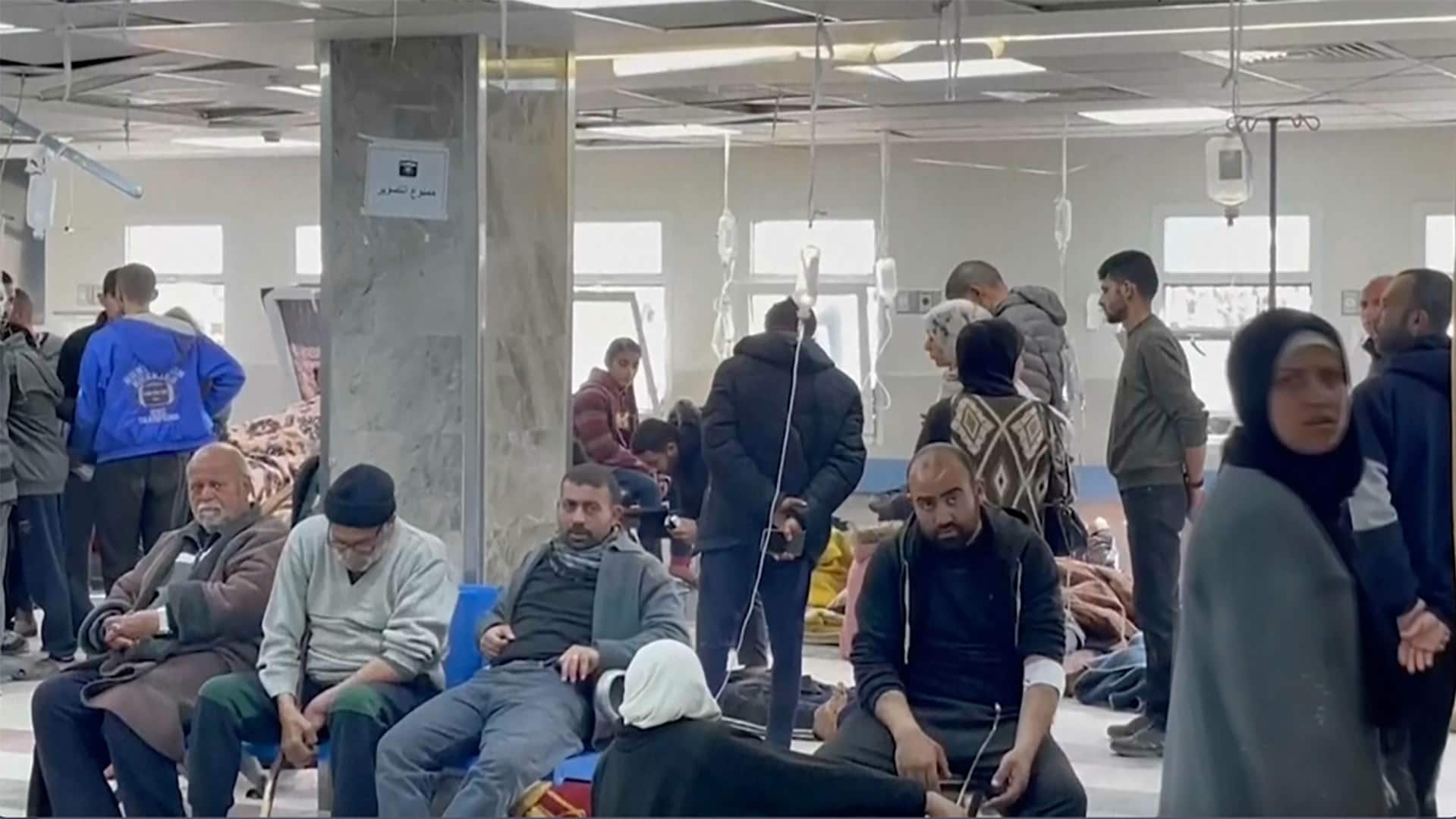
International outcry after deadly Gaza aid convoy incident
Pressure is mounting on Israel over the deaths of Palestinians lining up for aid in an incident during which its soldiers fired at the crowd. Several countries are backing a UN call for an inquiry.
The military said on Friday that about 12,000 people had gathered around the trucks as they were travelling toward distribution centres and began grabbing the food aid off them.
The military review of the incident showed the troops did not fire on the convoy itself, “but did fire at a number of suspects who approached the nearby forces and posed a threat to them,” the military said, adding that many of the casualties were caused by a stampede over the food and people being run over by the aid trucks.
The United Nations said last week that a UN team that visited Shifa Hospital in Gaza City reported that there were “a large number of gunshot wounds” among the more than 200 people being treated for injuries there last week.
The director of Al-Awda Hospital, in northern Gaza, said 80 per cent of the 176 wounded brought there had gunshot wounds. The European Union urged an international investigation into the killings.
With files from The Associated Press and CBC News
*****
Credit belongs to : www.cbc.ca
 Atin Ito First Filipino Community Newspaper in Ontario
Atin Ito First Filipino Community Newspaper in Ontario
